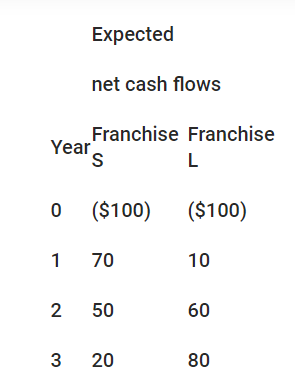Given the attractiveness of premium pricing during the growth stage of the market life cycle, managers should emphasize short-term results to increase profits.
Answer the following statement true (T) or false (F)
False
In the growth stage, revenues increase at an accelerating rate because new consumers are trying the product and a growing proportion of satisfied consumers are making repeat purchases. Since repeat purchases are necessary, a long-term strategy is desirable.
You might also like to view...
The common stock of Peachtree Paper, Inc., is currently selling for $40 a share. A dividend of $2.00 per share was just paid. You are estimating that this dividend will grow at a constant rate of 10%
(a) Using the constant growth DVM model, what is your required rate of return if $40 is a reasonable trading price? (Show all work.) (b) If Peachtree Papers is a new company that produces a relatively unknown product, is the constant growth model a good valuation method for a potential investor to use? Justify your answer. What will be an ideal response?
The smaller and shorter a project, the greater the chance of disruption due to unanticipatedevents
Indicate whether the statement is true or false
Which of the following is a reason for the decline in the popularity of the radical view of FDI?
A. The rise of communism in Eastern Europe B. The generally steady economic growth of those countries that embraced the radical position C. The growing belief in many countries that FDI leads to loss of jobs D. The strong economic performance of those developing countries that embraced capitalism E. The collapse of capitalism in the newly independent nations of Asia
You have just graduated from the MBA program of a large university, and one of your favorite courses was “Today’s Entrepreneurs.” In fact, you enjoyed it so much you have decided you want to “be your own boss.” While you were in the master’s program, your grandfather died and left you $1 million to do with as you please. You are not an inventor and you do not have a trade skill that you can market; however, you have decided that you would like to purchase at least one established franchise in the fast-foods area, maybe two (if profitable). The problem is that you have never been one to stay with any project for too long, so you figure that your time frame is three years. After three years you will sell off your investment and go on to something else.
You have narrowed your selection down to two choices;(1) Franchise L,Lisa’s Soups, Salads, & Stuff and (2) Franchise S,Sam’s Fabulous Fried Chicken. The net cash flows shown below include the price you would receive for selling the franchise in Year 3 and the forecast of how each franchise will do over the three-year period. Franchise L’s cash flows will start off slowly but will increase rather quickly as people become more health conscious, while Franchise S’s cash flows will start off high but will trail off as other chicken competitors enter the marketplace and as people become more health conscious and avoid fried foods. Franchise L serves breakfast and lunch, while Franchise S serves only dinner, so it is possible for you to invest in both franchises. You see these franchises as perfect complements to one another: You could attract both the lunch and dinner crowds and the health conscious and not so health conscious crowds without the franchises directly competing against one another.
Here are the net cash flows (in thousands of dollars):
Depreciation, salvage values, net working capital requirements, and tax effects are all included in these cash flows.
You also have made subjective risk assessments of each franchise, and concluded that both franchises have risk characteristics that require a return of 10%. You must now determine whether one or both of the franchisesshould be accepted.
What is the difference between independent and mutually exclusive projects?